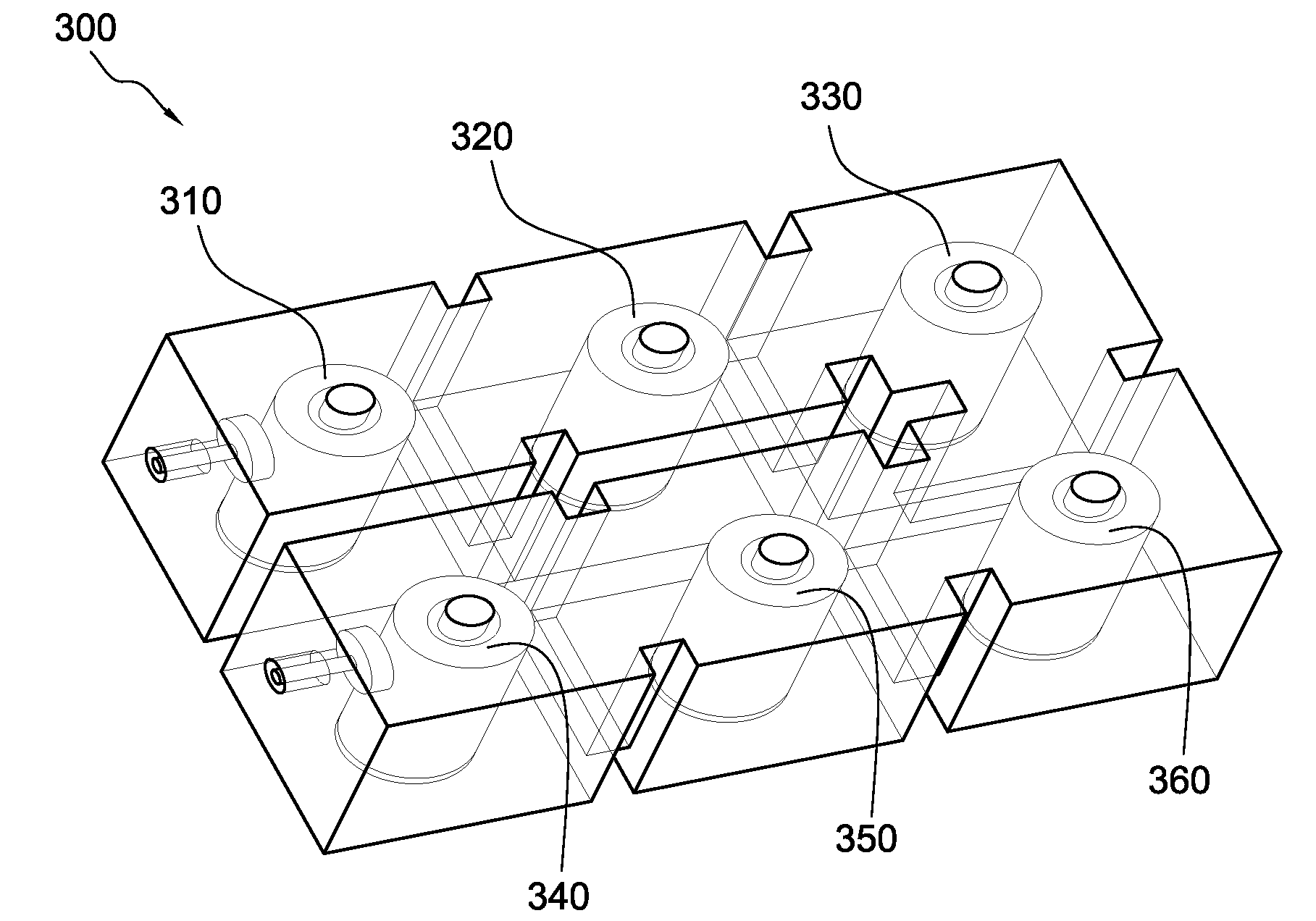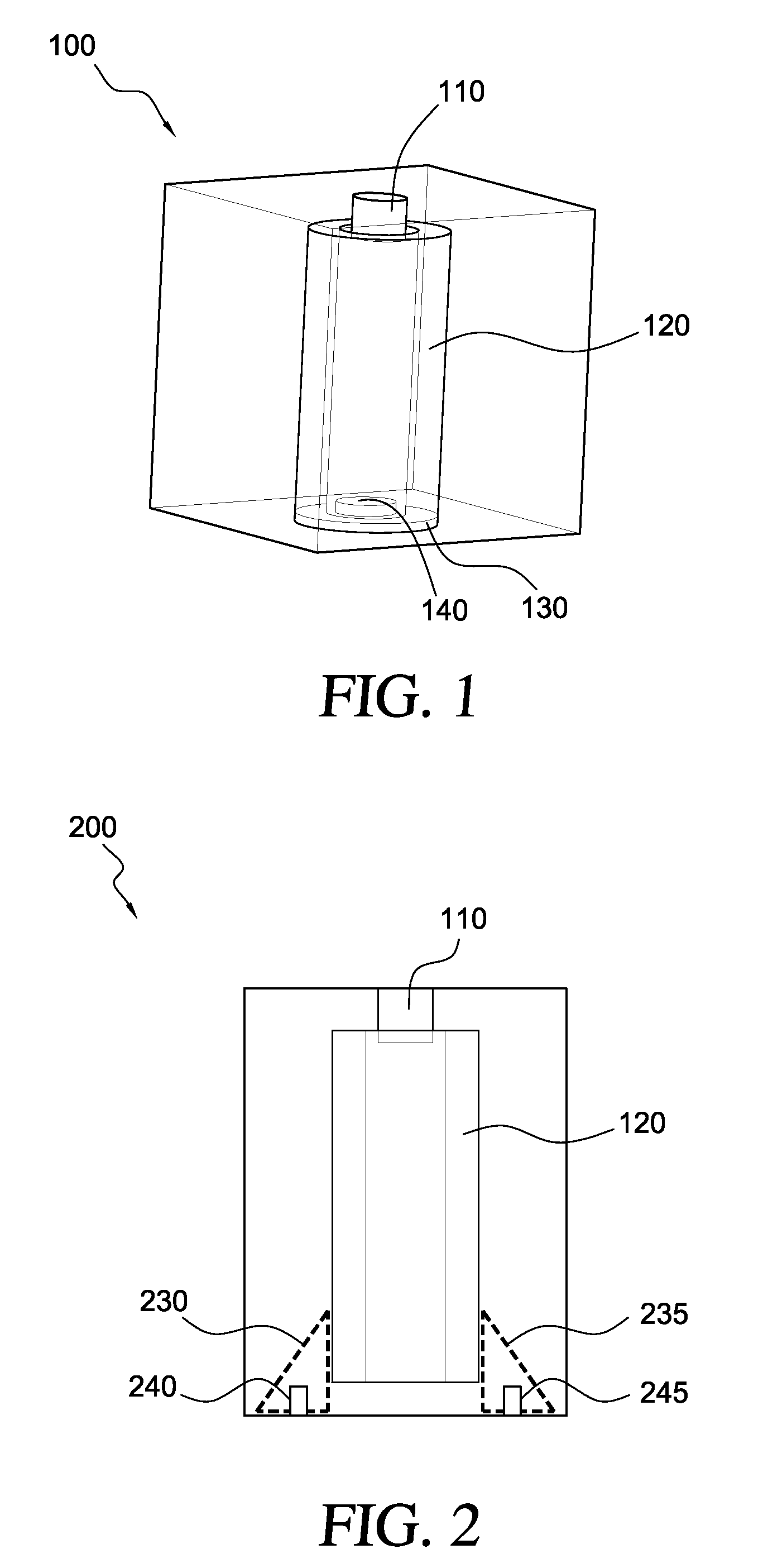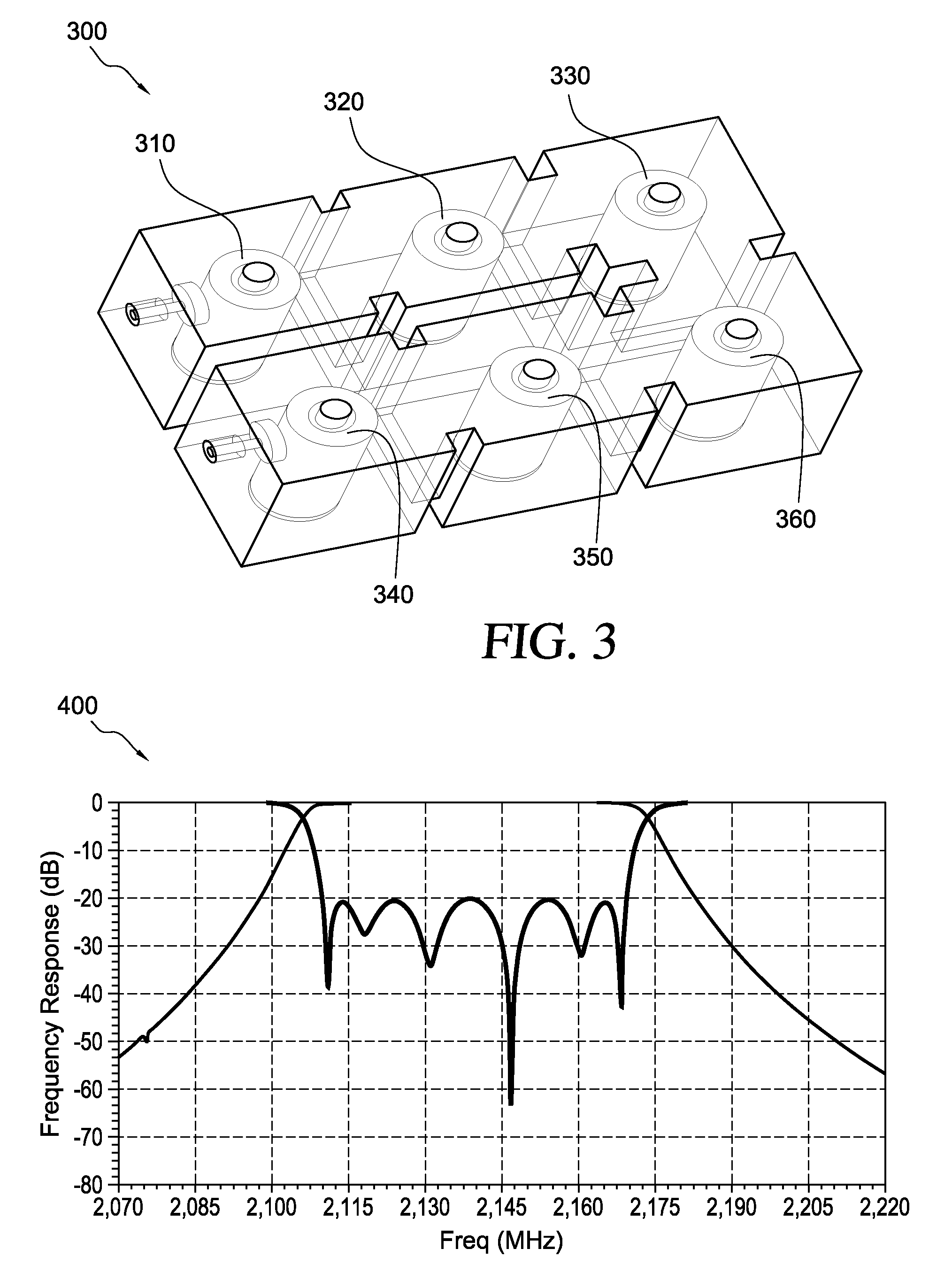Suspended tm mode dielectric combline cavity filter
a cavity filter and dielectric technology, applied in the field of combline filters, can solve the problems of poor filter quality factor, limited pattern of electromagnetic waves, and inability to support any tem mode signal, and achieve the effect of simple structure and same performan
- Summary
- Abstract
- Description
- Claims
- Application Information
AI Technical Summary
Benefits of technology
Problems solved by technology
Method used
Image
Examples
Embodiment Construction
[0030]Referring now to the drawings, in which like numerals refer to like components or steps, there are disclosed broad aspects of various exemplary embodiments.
[0031]FIG. 1 is a perspective view of an exemplary suspended TM mode dielectric combline cavity 100. In various exemplary embodiments, cavity 100 includes a tuning element 110, a resonator 120, a support disk 130, and amounting element 140. Cavity 100 is defined by at least one electrically conductive wall. In various exemplary embodiments, such walls may either be metallic or made from a metallized polymer.
[0032]In various exemplary embodiments, cavity 100 has the shape of a rectangular parallelepiped. Thus, cavity 100 may consist of a top side, a bottom side, and four side walls. As will be appreciated by those skilled in the art, cavity resonators may be fabricated in shapes other than rectangular parallelepipeds, such as spheres and cylinders.
[0033]In various exemplary embodiments, a tuning element 110 extends downward ...
PUM
 Login to View More
Login to View More Abstract
Description
Claims
Application Information
 Login to View More
Login to View More - R&D
- Intellectual Property
- Life Sciences
- Materials
- Tech Scout
- Unparalleled Data Quality
- Higher Quality Content
- 60% Fewer Hallucinations
Browse by: Latest US Patents, China's latest patents, Technical Efficacy Thesaurus, Application Domain, Technology Topic, Popular Technical Reports.
© 2025 PatSnap. All rights reserved.Legal|Privacy policy|Modern Slavery Act Transparency Statement|Sitemap|About US| Contact US: help@patsnap.com



